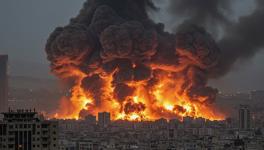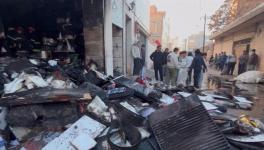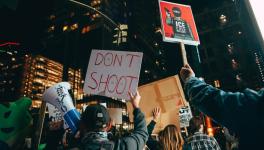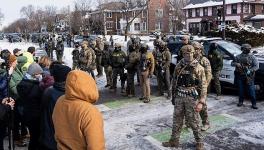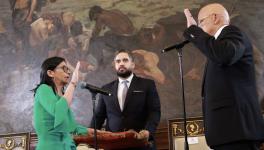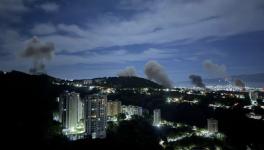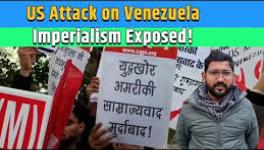Trump-Kim meet: Will the US End Indecisiveness and Take Concrete Steps to Peace?
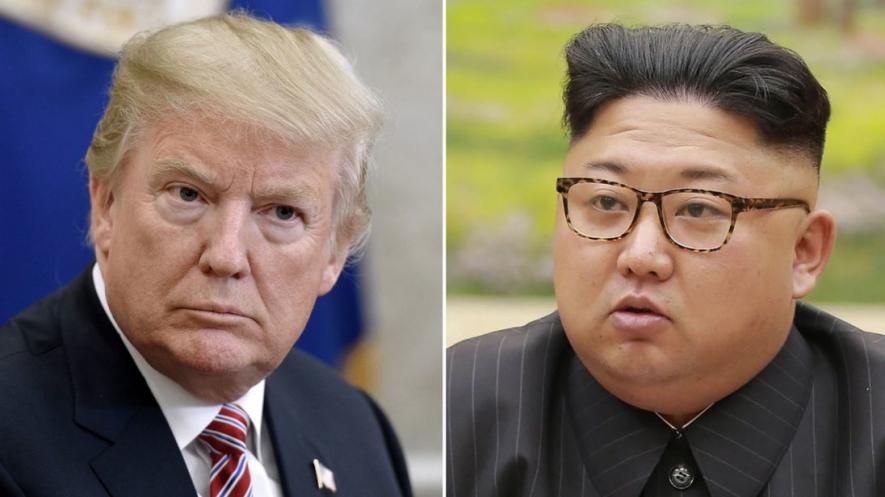
After numerous disruptions, mainly US-induced, which almost derailed their summit, President Donald Trump and North Korean leader Kim Jong-un finally arrived in Singapore on Sunday for their historic meet scheduled for June 12.
Kim, on arrival, visited the Presidential palace where he met Singapore's Prime Minister Lee Hsien Loong and Foreign Minister Vivian Balakrishnan, who after returning from his recent visit to North Korea had told reporters that he was impressed with the work undertaken by the government to upgrade the country’s infrastructure.
North Korean state-media KCNA reported that Kim expressed his gratitude to the Singaporean government “for its sincere cooperation of providing all conditions and best conveniences for the historic.. summit meeting and talks”. Prime Minister Loong in turn expressed his “expectation that the historic summit talks would offer an important occasion in achieving peace and stability of the Korean peninsula.”
The official newspaper of Central Committee of the Workers' Party of Korea, Rodong Sinmun, said in an article this morning, “Wide-ranging and profound views on the issue of establishing new DPRK-U.S. relations, the issue of building a permanent and durable peace-keeping mechanism on the Korean Peninsula, the issue of realizing the denuclearization of the Korean peninsula and other issues of mutual concern, as required by the changed era, will be exchanged at the DPRK-U.S. summit talks.”
“Even if a country had a hostile relationship with us in the past, our attitude is that if this nation respects our autonomy... we shall seek normalisation through dialogue,” North Korea’s state media added.
US sends confusing signals
On the other hand, the US - whose officials have been in negotiations with North Korean officials at the Ritz Carlton hotel to agree on the issues to be discussed at tomorrow’s meeting - has been sending confusing signals.
While US Secretary of State Mike Pompeo has reportedly said that Trump’s “position remains clear and unchanged,” the contradictory assertions made by various US officials, including the President himself, suggest otherwise. Earlier, US National Security Advisor John Bolton had insisted that the ‘Libyan model’ should be applied to North Korea, which would have implied that the latter completely dismantle all its nuclear infrastructure before sanctions could be lifted and relations normalized.
Jong-un, who assumed power around the same time Libyan leader Muammar Qaddafi was lynched a few years after dismantling his country’s nuclear programme, responded sharply to Bolton’s statements, following which Trump distanced himself from his official’s view. Trump went on to say, “The Libya model isn’t the model that we have at all when we’re thinking of North Korea.. In Libya, we decimated that country. That country was decimated.” Following this assurance with a threat, he added that North Korea would meet the fate of Libya, “if we don’t make a deal.”
A couple of weeks ago, Susan Thornton, the acting assistant Secretary of State in charge of Asia with experience in working with North Korea, said that there would be “multiple steps to any denuclearization”, and that the summit tomorrow “will be the beginning of a process”.
However, Secretary of State Mike Pompeo asserted on Thursday that North Korea should completely dismantle its nuclear programme before the international sanctions imposed on the country could be lifted.
North Koreans “almost certainly have concrete plan of action”
In contrast to the inconsistent stand of the US, the North Koreans “almost certainly have [a] concrete plan of action for the upcoming summit,” Joel Wit, an international security expert with 15 years of experience in working with the US State Department on arms control, wrote in the Atlantic last month.
In his article, Wit, sharing insider information on the meetings in 2013 between US and North Korean officials, explained the plans North Korea had for denuclearization. Though the meeting ended in failure after the Obama administration dismissed North Korea’s stated willingness to denuclearize as “propaganda”, North Korea, Wit argued, actually had concrete plans about how to proceed with denuclearization, provided that the US ended its “hostile policy” - on the political, economic and security fronts.
“The “political” part means U.S. recognition of North Korea as a sovereign state through establishing diplomatic relations between the two countries,” Wit wrote. The North Korean officials he met saw the fact that their state was one of the very few which had never been recognized by the US as an indication of the American government’s intention to overthrow the ruling regime. The ending of hostilities on the economic front would require the US to lift the trade restrictions and other sanctions that have crippled the country’s economy for over half a century.
Since there was no peace treaty signed at the end of the Korean war in 1953, a state of war technically continues to exist. Every year, the US and South Korean forces conduct joint military exercises in the region, simulating the invasion of North Korea and the bombing of its crucial military infrastructure. During these war games, North Korea is forced to mobilize its
security forces at a huge cost to its economy - which is already choked by sanctions - in order to be prepared for the contingency of the simulation turning into a real invasion.
Surrounded by American military bases from Japan to the Philippines, with nuclear armed submarines plying the waters off the country’s coast, North Koreans see theirs as a state facing a security threat. An end to hostilities on the security front, North Korean officials had told Wit, would require a peace treaty, marking an official end to the state of war.
Multi-stage process
While sections of the US officialdom seem to want unilateral concessions, their counterparts in North Korea seem to have a more nuanced view of the process. According to Wit, North Korean officials did not expect that the US would first end its hostilities on all fronts. What they expected was a three-stage process, in which every step US took towards ending hostilities would be reciprocated by North Korea with a step towards denuclearization. Wit wrote:
“In each phase, the two sides would take simultaneous steps leading to the final outcome: the end of hostility and denuclearization. The North Koreans visualized a straightforward three-stage process for their own side of the equation—freezing their nuclear program, disabling key facilities, and finally dismantling not only those facilities but their nuclear weapons as well.”
To initiate the process, the “North Koreans wanted the United States to declare up front all the steps it was willing to take during each phase of denuclearization to show its intention to remove its “hostile policy.” In return, the North would initially freeze its nuclear program.”
However, when the American delegation at the meeting complained that such a process would require the US to lay out the steps they would be taking at the very beginning of the process, without North Korea having to do the same, “the North Koreans indicated they would be willing to consider a bilateral declaration of reciprocal commitments.”
If such a plan can be agreed upon in the summit meet tomorrow, Wit pointed out, it could be an ideal outcome.
Five years have passed since these meetings, and North Korea’s nuclear capabilities have significantly increased. Wit commented, “The 2013 plan may have been subject to some revision. In fact, the North Koreans have already deviated from it, albeit in a positive direction from the U.S. perspective: They have taken unilateral steps — halting nuclear and missile testing as well as pledging to dismantle their nuclear test site — that seemed implausible five years ago.”
However, Wit added, “the proposal the North Koreans offered then still gives the clearest picture we have to date of what they might want from the upcoming negotiations.”
If an agreement on such a step-by-step process can be reached at the summit tomorrow, it would be a significant diplomatic breakthrough, which would make the world a safer place. A failure to reach an agreement, on the other hand, may not only be a missed opportunity, but also escalate the tension between the US and North Korea. The stakes are high as observers across the world anxiously follow the developments at this historic meet.
Get the latest reports & analysis with people's perspective on Protests, movements & deep analytical videos, discussions of the current affairs in your Telegram app. Subscribe to NewsClick's Telegram channel & get Real-Time updates on stories, as they get published on our website.









